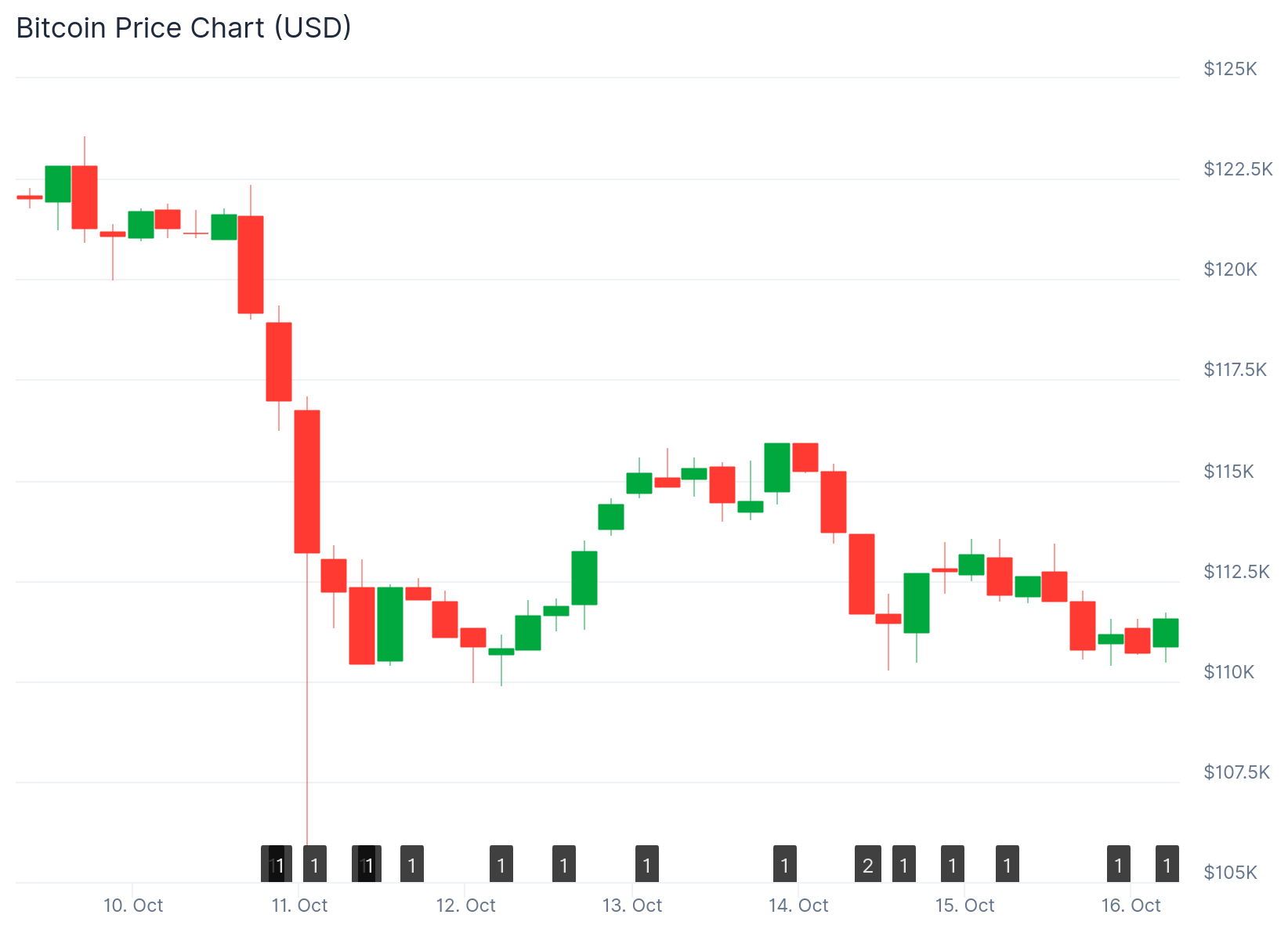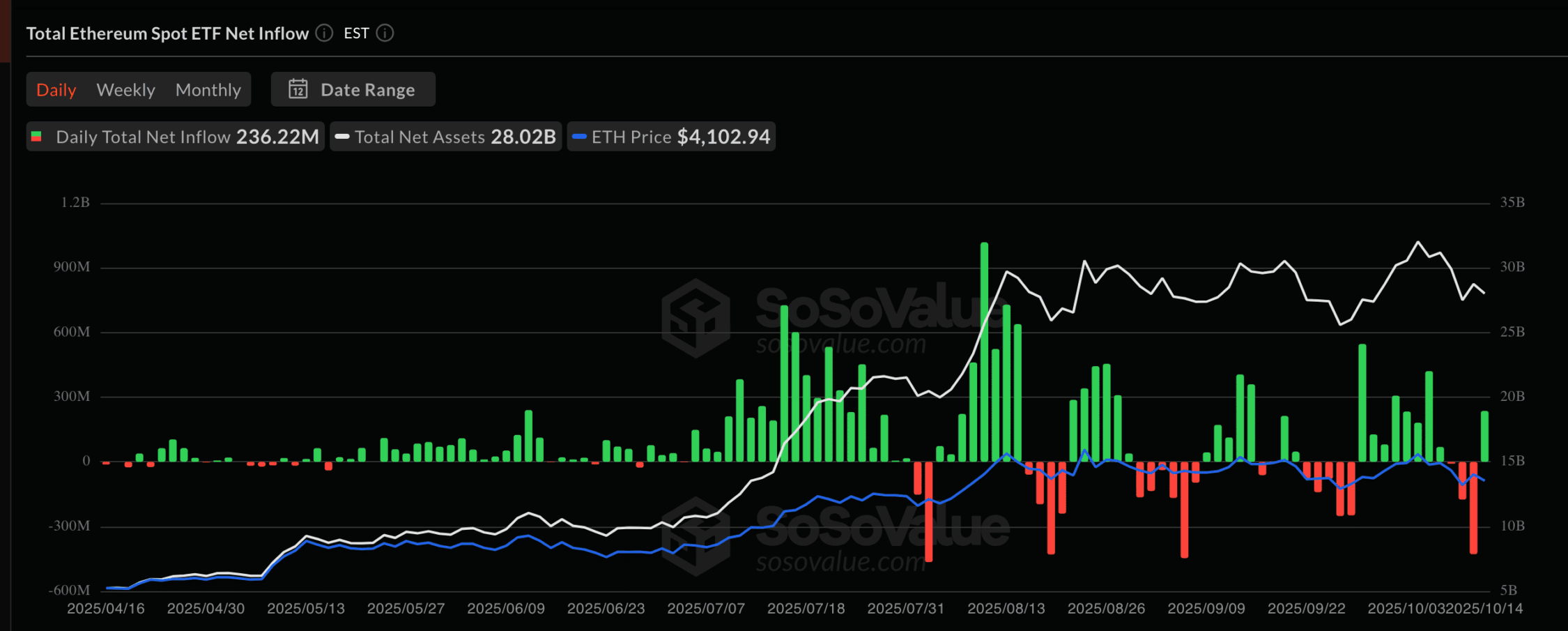TLDR
- Bitwise CIO Matt Hougan called the recent crypto market crash a “temporary blip” and not a fundamental problem
- Bitcoin dropped 15% and Solana fell 40% after Trump announced 100% tariffs on Chinese imports but Bitcoin recovered to $115,000
- Crypto ETFs saw $338 million in net inflows on October 14, with Bitcoin ETFs getting $102.6 million and Ethereum ETFs receiving $236.22 million
- About $12 billion in Bitcoin futures positions were liquidated on Friday, making it the largest deleveraging event in USD terms
- The crash was driven by crypto-native traders on exchanges like Binance, not traditional finance investors at CME
Matt Hougan, Chief Investment Officer at Bitwise, said the recent crypto market crash was a short-lived event in an otherwise strong bull market. Bitcoin fell sharply after President Trump announced plans for a 100% tariff on Chinese imports late Friday.
The selloff erased billions in leveraged positions across the market. Bitcoin dropped as much as 15% while Solana tumbled up to 40%. Other altcoins also saw steep declines as panic spread through trading platforms.
The crash began late Friday but the recovery came quickly. By Monday morning, Bitcoin had climbed back to around $115,000. This nearly reversed all the losses from the sudden downturn.

Hougan described the event as a “momentary shakeout” that didn’t change the fundamental outlook for crypto. He noted that DeFi protocols like Uniswap, Aave, and Hyperliquid performed well during the volatility. Centralized exchanges like Binance faced temporary disruptions but the infrastructure held up overall.
The Bitwise CIO emphasized that such price swings are normal in emerging markets. He said the digital asset ecosystem has become much stronger compared to past downturns. Traditional markets could have seen deeper consequences from such a rapid unwind.
Strong ETF Inflows Signal Recovery
Crypto ETFs showed clear signs of institutional confidence returning. On October 14, spot Bitcoin and Ethereum ETFs recorded net inflows of $338 million according to SoSoValue data.

Bitcoin spot ETFs brought in $102.6 million in net inflows. Fidelity’s FBTC led with $133 million while Bitwise’s BITB added $8 million. ARK and 21Shares’ ARKB gained $6.8 million during the same period.
BlackRock’s IBIT and Valkyrie’s BRRR saw outflows totaling $44.85 million. Despite these outflows, the overall trend pointed to growing institutional interest.
Ethereum ETFs performed even better with inflows of $236.22 million. Fidelity’s FETH led again with $154.62 million. Grayscale, VanEck, Franklin Templeton, and Bitwise also reported strong demand from investors.
Largest Deleveraging Event in History
The crash triggered the largest liquidation event in crypto history on a nominal basis. Bitcoin open interest dropped from $70 billion to $58 billion in a single day. This represented a decline from 560,000 BTC to 481,000 BTC in futures positions.

The $12 billion drop marked the largest single-day deleveraging event in USD terms. In BTC terms, it was the second-largest on record behind only the March 2020 COVID crash. Bitcoin was trading at $5,000 during that earlier event compared to $122,000 now.
The Chicago Mercantile Exchange saw little change during the selloff. CME open interest held steady at around 145,000 BTC throughout the volatility. This stability suggests institutional investors on CME weren’t driving the crash.
Binance experienced the bulk of the deleveraging. The exchange saw open interest drop from $16 billion to $12 billion. This fell from 130,000 BTC to 105,000 BTC in futures positions.
The data shows crypto-native traders caused the crash rather than traditional finance participants. Past deleveraging events of this size have often marked market bottoms. Examples include the 2020 COVID crash, the 2021 China mining ban, and the FTX collapse in November 2022.
Bitcoin price increased by 1.11% in the last 24 hours to reach $112,606. Ethereum rose by 4.09% during the same period.





